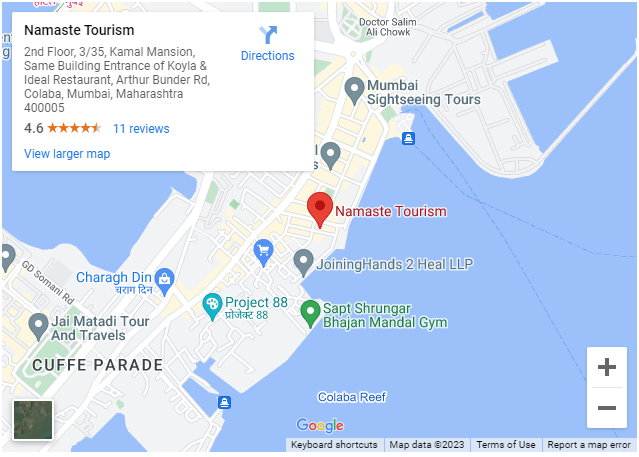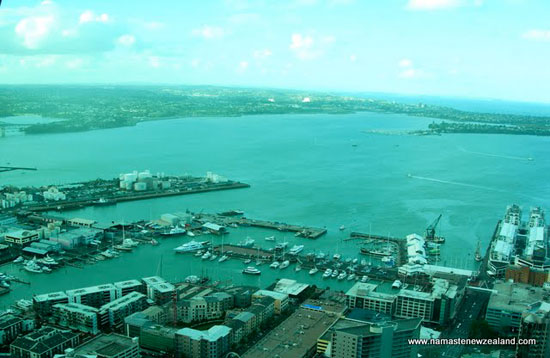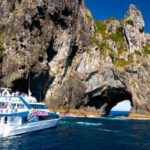Interview: Hans-Jurgen Goller – Founder-Director, Tourism Marketing Company of Saxony, August 2008
How long have you been associated with Saxony Tourism?
Our company was founded 8½ years ago. As I was the Founder-Director, it has been the same time that I have been working for Saxony Tourism.
What is the number of tourists that Saxony gets annually and what is the estimated growth expected in the year 2008-09?
Saxony welcomes 6 million tourists annually. This figure is based on the tourists that are staying at least one night in a hotel or any other accommodation in Saxony. Including day-trippers, of which we have many, would obviously add to the figure. I would expect our tourism figures to rise by 3% to 4% this year.
If you segment your tourism market, which are the larger markets?
When discussing tourism in Saxony, the majority centres on domestic tourism from Germany itself. That is the predominant source market. But there is a reason for that. The statistics we refer to also include business visitors and Germany is a very strong economic country. Therefore many of the overnight stays by foreign visitors in Germany are because of business purposes.
Eastern Germany, including Saxony, is not as economically strong as Western Germany so visitors to Saxony are predominantly leisure tourists. Dresden however receives a significant number of business visitors as well because of its microchip industry.
The figure for overnight visitors in Germany is 16%. For Saxony, it is 10%. But if you look at Frankfurt and Düsseldorf, it is 80% of overnight visitors for business purposes. What does this mean? It means that as a tourism base, we are very well established. We have a very good product which is appreciated by foreign visitors. The incoming figures have developed very well over the last 5 years. We have had a substantial increase in foreign visitors to Saxony. And our development has been much greater than the rest of Germany.
Which are the markets outside Europe and US that you plan on tapping in the future?
As a responsible tourism manager, I think we have to look everywhere for new opportunities and markets. The US is by far our predominant source of incoming tourists. It is the top source market for Saxony; not however for Germany.
When we look at Asia, of course Japan is the most important source market. Sadly the development has not been optimum because of the economic situation in Japan. There has been a decline of tourism into Europe. It affects France, UK, Germany and Saxony of course. But still Japan is our biggest market. Japanese are very interested in German culture and history. There is a reason for that. These two countries share a rich history.
The Chinese market is developing rapidly because of the sheer size of the country. Saxony however is not the preferred destination in Germany for the Chinese. They are generally more inclined towards Hamburg and southern Germany.
After Japan and China, the Indian market is the largest. It is however currently only a developing market. It is not yet a very strong, important source market for us. But we are very positive that it will soon become one. It is difficult to say how quickly the development will occur. I am very optimistic though when it comes to the economic development in India.
Of course Indians have a vast choice as well. They can go to France, UK or the rest of Germany. The air connections are improving every year; new routes, new operators, new airlines. It will be a challenge to attract Indians into Saxony because they have attractive alternatives and choices. But we will do our best to convince them that visiting Saxony, with all the heritage and history that we can offer to a tourist, will be much appreciated.
Austrian and Lufthansa both fly into Dresden, so the awareness is growing. What are the things one can experience in Dresden and the rest of Saxony?
It depends of course on the tour. We are aware that most tours of visitors from other continents are featuring a larger area in a short time. You can see Germany in 4-5 days. You can see Europe in 10-12 days. At present most of our visitors from India are coming to Dresden and Leipzig, our two big cities. We strive to showcase all our cultural highlights: the architecture, the opera house and the museums. That is of course the focus. If time and seasonality permit, it is also worthwhile leaving these two cities and exploring the rest of Saxony. For example, when in Dresden, you can go up the Elbe River to the Saxon-Switzerland area where the sandstone rocks are and experience a breathtaking panorama and countryside.
We have the Saxon wine route which centres on Meissen, also famous for its porcelain. There are many attractions around Leipzig. To be honest, not all of them are in Saxony but in my view that does not make much difference to the visitor from India. The barhouse in Dessau is very interesting. Wittenberg is where Martin Luther worked for a long time. These are all near Leipzig.
We have Western Saxony where the mountain regions are. Of course winter sports are the priority during winter, but probably not so much in the focus of the Indian market. We however have craftsmen in the mountains as well. There is much industrial heritage in that area.
There is also a lot of special architecture and special traditions throughout the region. The different communities have their own crafts and heritage. There is a wide choice if someone decides to stay in Saxony for a week. I believe there would not be any problem in shaping a very interesting itinerary and programme. It simply depends on how much time a visitor would like to spend in Saxony.
How did you develop the tagline ‘Saxony – State of the Arts’?
From a professional viewpoint, it is my conviction that for almost any product there is a similarity in this world, especially in the tourism industry. I do not believe in unique selling propositions in regard to tourism. Only Australia has Ayers Rock and only Paris has the Eiffel tower. But you also have the Grand Canyon in America and there are numerous other iconic towers in other cities.
Accordingly, it was a decision by us to accentuate Saxony’s cultural highlights. Of course other cities such as Vienna, Rome, Paris and Berlin have so much to offer culturally as well. But Saxony is a very small region within which you can experience a range of cultural aspects from craftsmanship to painting to music and everything else in between.
We decided that for the international traveller we would only focus on these aspects. Keeping this in mind, the best tagline for Saxony is ‘State of the Arts’. It is what we have to offer. And to some extent, it is also a marketing decision to say that we would like to focus on just this aspect. People can walk and hike and cycle anywhere in Europe. Saxony, however, is famous for its history and heritage. In the end, it was an easy decision to promote the cultural aspect of our country and call it: Saxony – State of the Arts.
You seem to have many varied interests such as fine cuisine, wines, etc. What are your interests in areas besides tourism?
My life primarily centres on my job. I would not say I think about my work 24 hours a day, but I am in principle available. My cell phone is normally never switched off. To be honest, I find it difficult to have a hobby which demands complete focus and concentration.
As my job involves travelling around the world and meeting a variety of people, I am very open-minded and have many friends. I enjoy dining out with friends, which I do often. And of course if you go out frequently and enjoy good food and wine, you become interested in their finer aspects. That is how it developed.
I have been on many wine tours throughout Europe; France, Italy, Germany and Switzerland which, by the way, has excellent wines. That is how I learned about wine. And I was very focussed on it. There was even a time in my life about 15 years ago where I was considering a career in the wine industry rather than marketing.
I am also interested in sports and politics. I read a variety of magazines. It is not only wine. These are activities I can pursue alongside my work without having to focus too much on it.
Lastly, your message to readers from India; what are the 3 things that will appeal to them from the region of Saxony?
Overall it would have to be culture. To be more precise: architecture, German heritage and tradition.




